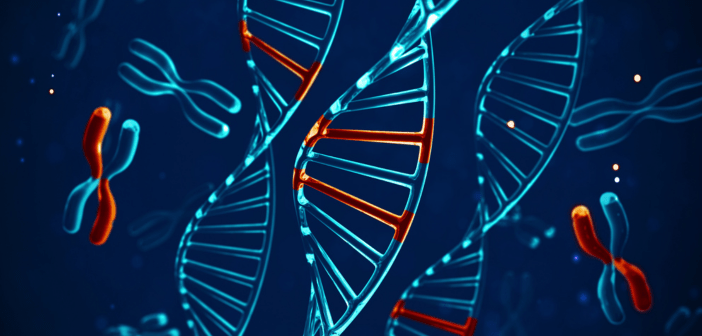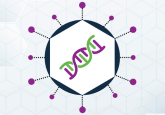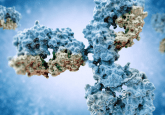Bioanalytical strategies and methodologies for AAV-based gene therapies

Author: Tong-Yuan Yang, PhD, Bioanalytical Discovery and Development Sciences, Preclinical Sciences and Translational Safety, Johnson & Johnson Innovative medicine (PA, USA)
 Tong-Yuan Yang is a Senior Director in the Bioanalytical Sciences group at Johnson & Johnson Innovative Medicine (JJIM) (PA, USA), where he leads the development and validation of bioanalytical assays and their implementation in non-clinical and clinical study bioanalysis to support JJIM’s pipelines. Before joining JJIM, Tong had worked at Merck Research Laboratories (NJ, USA) focusing on drug discovery and product development. Tong obtained his PhD in Molecular Virology from Pennsylvania State University (PA, USA), where he also currently holds an adjunct professorship in the Department of Pharmacology.
Tong-Yuan Yang is a Senior Director in the Bioanalytical Sciences group at Johnson & Johnson Innovative Medicine (JJIM) (PA, USA), where he leads the development and validation of bioanalytical assays and their implementation in non-clinical and clinical study bioanalysis to support JJIM’s pipelines. Before joining JJIM, Tong had worked at Merck Research Laboratories (NJ, USA) focusing on drug discovery and product development. Tong obtained his PhD in Molecular Virology from Pennsylvania State University (PA, USA), where he also currently holds an adjunct professorship in the Department of Pharmacology.
Keywords: Adeno-associated virus (AAV), biodistribution, shedding, immunogenicity, humoral and cellular immune responses
Biodistribution and shedding
Biodistribution of AAV-based gene therapies (GTs) describes how a GT is spread within the patient’s body from the site of administration [1, 2, 13]. These data are used to determine the potential for vector presence in desired target tissues/biological fluids (e.g., blood and cerebral spinal fluid), in non-target tissues/biological fluids and in the germline. The characterization of the vector presence, persistence and clearance profile can inform the selection of the GT product dosing schedule, the monitoring schedule for various activity/safety parameters, and the animal sacrifice time points in the definitive pre-clinical studies. The biodistribution data, coupled with other pre-clinical safety endpoints such as clinical pathology and histopathology, help determine whether vector presence or gene expression correlate with any tissue-specific detrimental effects in the animals. Due to limitation of tissue collections in clinical studies, the minimum panel of tissues recommended for non-clinical biodistribution assessment are: blood, injection site(s), gonads, brain, liver, kidneys, lung, heart and spleen. Depending on the route of administration and biology of the investigational GT product (vector type and expressed transgene), additional tissues may need to be collected and analyzed [6].
Shedding [3, 4] means release of a GT from the patient through one or all of the following ways: excreta (feces); secreta (urine, saliva and nasopharyngeal fluids etc.); or through the skin (pustules, sores and wounds). Shedding describes how a GT is excreted or released from the patient’s body. Shedding raises the possibility of transmission of a GT from treated to untreated individuals (e.g., close contacts and health care professionals). Shedding results from non-clinical studies can justify the sampling timepoints for clinical collection of shedding samples.
Tissue/biological fluid analysis should be conducted at the molecular level for biodistribution and shedding, using a quantitative PCR (qPCR) assay to determine the number of vector copies per microgram of genomic DNA at specified time points post-vector administration. A consensus of assay sensitivity at 50 copies of vector per microgram genomic DNA or in volume for liquid matrices, except blood, is followed [5]. In addition, the presence of a vector sequence in tissues/biological fluids may trigger further analysis to determine the transgene expression levels, such as transgene mRNA for intracellular proteins or transgene protein for membrane-bound or secreted proteins. A reverse transcription real-time qPCR assay is usually used for transgene mRNA detection, while a variety of biochemical and immunological methods have been employed for transgene protein measurement [12]. In clinical studies, quantitative measurement of secreted or membrane-bound transgene protein levels with standard methodologies, such as immunoassays, LC–MS or flow cytometry, is desired for establishment of the PK/PD/safety relationship.
Immunogenicity
AAV-based GTs can trigger both innate and adaptive immune responses in dosed subjects [7]. In addition, a high percentage of the human population has pre-existing adaptive immunity against different serotypes of AAVs due to opportunistic infections. Dosing patients with AAV-based GT can reactivate pre-existing immunity in spite of the prophylactic immunosuppressant regimen given. The interplay of innate and adaptive immunity against the GT can result in mild clinical symptoms to severe adverse events, such as (immuno-) toxicities in thrombocytopenia, tissue toxicity or atypical hemolytic uremic syndrome, depending on route of administration or indications.
Innate immunity, manifested by elevated levels of different cytokines, is usually measured in non-clinical and clinical studies as safety biomarkers utilizing well established, high-throughput multiplexing immunoassays for cytokine panels. Humoral immune responses against AAV capsid and transgene protein are usually measured on a required basis for the interpretation of any toxicity findings. Cellular immunogenicity against AAV capsid and transgene protein is rarely needed in non-clinical studies.
However, it is a regulatory expectation that both humoral and cellular immune responses against a GT should be monitored in clinical studies from numerous regulatory guidance documents (see reference 8 as an example) due to their association with safety and impact on efficacy, primarily from trials with systemic administration. For the measurement of total and neutralizing antibodies against AAV capsid, standard methodologies have been described [9, 10]. Usually for systemic administration, the levels of total or neutralizing antibodies against AAV capsid are sometimes used for screening and selecting patients during the trials. Recent recommendations have been published on the use of these tests and strategies [11]. The assays for total and neutralizing antibody against the transgene proteins are standard immunoassays based on generations of learnings from immunogenicity testing of conventional biologics.
The standard methodology for monitoring host cellular immune responses against either AAV capsid or transgene protein is an ELISpot assay by measuring IFN-γ secretion from human PBMCs stimulated with peptide pools, based on the protein sequences of AAV capsid or transgene proteins. Due to logistic issues of collecting subject PBMCs, such as requiring pediatric patients, short stability, fragile viability of PBMCs and no reported impact of cellular immunogenicity on efficacy or safety with local administration (e.g. in inherited retinal indications), a dialogue between the industry and regulatory authorities is needed to align on the requirement and scientific justification for the continuation of cellular immunogenicity testing based on risk assessment.
Disclaimer: the opinions expressed are solely my own and do not express the views or opinions of my employer, Bioanalysis Zone or Taylor & Francis Group.
Our expert opinion collection provides you with in-depth articles written by authors from across the field of bioanalysis. Our expert opinions are perfect for those wanting a comprehensive, written review of a topic or looking for perspective pieces from our regular contributors.
See an article that catches your eye? Read any of our articles below for free.






